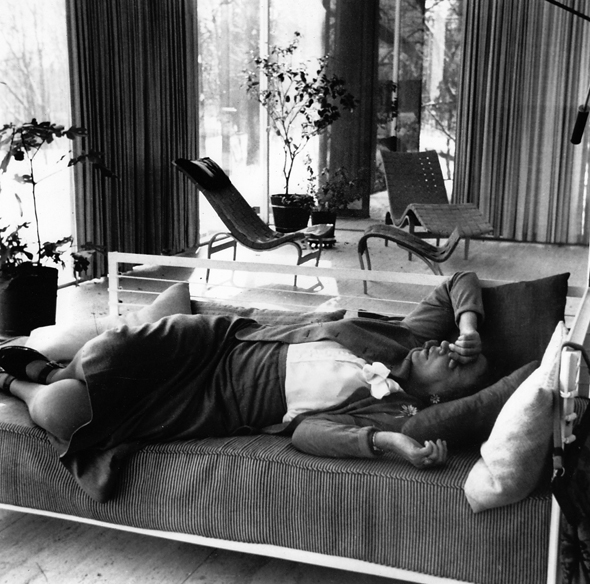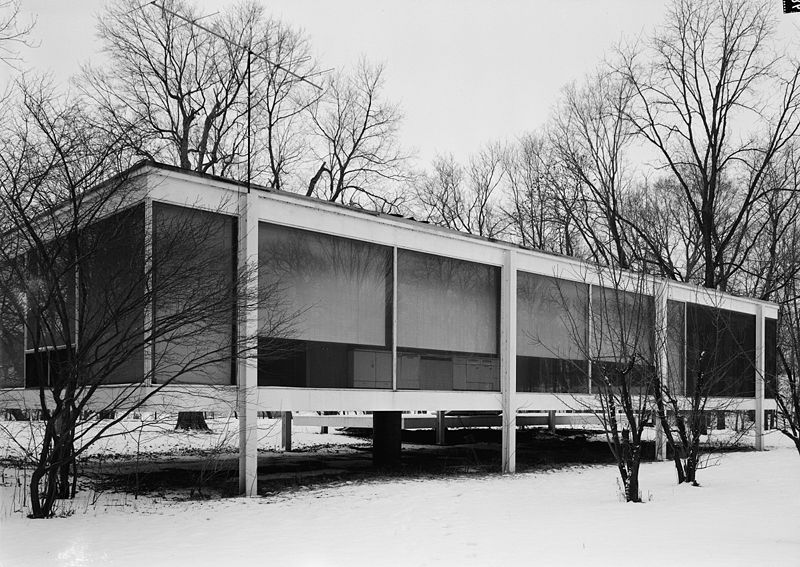Consider Our New Home (Tribute to Edith)
Consider the house.
The good doctor (a nephrologist!) Edith Farnsworth first commissioned architect Mies van der Rohe to construct her one-room weekend retreat adjacent to the Fox River at a dinner party in 1945. Farnsworth had earlier purchased the land that became the lot that became the Farnsworth House from Colonel Robert R. McCormick, then-publisher of the Chicago Tribune (heralded by political cartoonists of the day as Colonel McCosmic—a Commie-chasing, New Deal-loathing, socialism-fearing, World-of-Nations-knocking isolationist unlikely to syndicate Eleanor Roosevelt’s column “My Day” anytime soon).
Is there an adage about dinner parties?
 Things between Edith and Mies didn’t really work out. It’s a complicated story involving malpractice suits; transparency in the client-architect relationship; escalating construction costs due to scarcity of materials, fueled by the Korean War; and the larger, nationally staged social dramas of the McCarthy era, in one case manifesting in vitriol from House Beautiful magazine. Prior to the clamor, previous to the house’s completion in 1951, and before dear Edith sold the house to Lord Peter Palumbo, took off to Italy, and began working with Eugenio Montale, a model version of the Farnsworth House was included in the 1947 MOMA exhibition (#356) “Mies van der Rohe,” organized by Philip Johnson (inaugural director of MOMA’s Department of Architecture who, in 1949, would construct his own Glass House in New Canaan, Connecticut). Johnson’s catalog was the first full-length monograph published on Mies’s work. The now-jostling opening of its preface? “Of all the great modern architects, Mies van der Rohe is the least known.”
Things between Edith and Mies didn’t really work out. It’s a complicated story involving malpractice suits; transparency in the client-architect relationship; escalating construction costs due to scarcity of materials, fueled by the Korean War; and the larger, nationally staged social dramas of the McCarthy era, in one case manifesting in vitriol from House Beautiful magazine. Prior to the clamor, previous to the house’s completion in 1951, and before dear Edith sold the house to Lord Peter Palumbo, took off to Italy, and began working with Eugenio Montale, a model version of the Farnsworth House was included in the 1947 MOMA exhibition (#356) “Mies van der Rohe,” organized by Philip Johnson (inaugural director of MOMA’s Department of Architecture who, in 1949, would construct his own Glass House in New Canaan, Connecticut). Johnson’s catalog was the first full-length monograph published on Mies’s work. The now-jostling opening of its preface? “Of all the great modern architects, Mies van der Rohe is the least known.”
A house, my friends, is not a home.
What is the point of all of this? Well, there is that adage about dinner parties, or is it psychics? (Case in point: Sarah Winchester and the epic construction of the Winchester Mystery House in San Jose, California) Mies certainly knew that God is in the details, and global renown came his way by the time he constructed IIT’s Crown Hall in 1956, if not concurrently with the MOMA exhibition of his work. Franz Schulze penned remarkable biographies of both van der Rohe and Philip Johnson, both of which are published by the University of Chicago Press. Chicago’s Newberry Library holds Edith Farnsworth’s archives (1900–77), including six letters from Eugenio Montale, three of whose books Farnsworth eventually translated into English. Oh, and Farnsworth—cultivated, brilliant, and open-minded by most accounts—called Mies a “medieval peasant” and a “hedgehog” (apologies to Isaiah Berlin!).
In tribute to that burrowing, quill-ing systems addict, the hedgehog:
Here’s to our new home on the web—a redesigned & reinvigorated Chicago Blog—have a look around, won’t you? We’re back—and more Modern than ever?
Remember: people who live in glass houses shouldn’t throw stones. [Except maybe in this instance, when it seemed pretty warranted. #TeamEdith]
